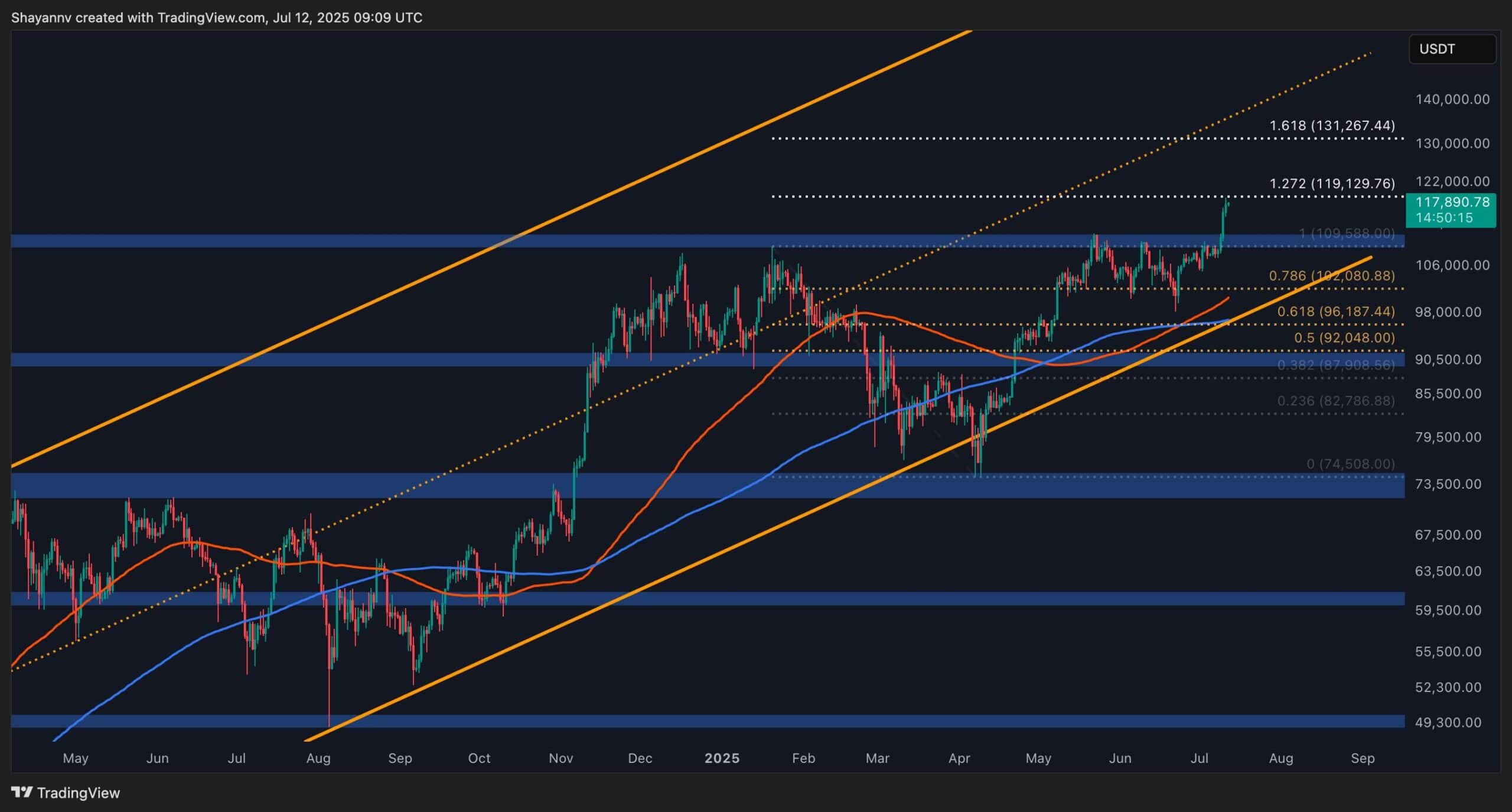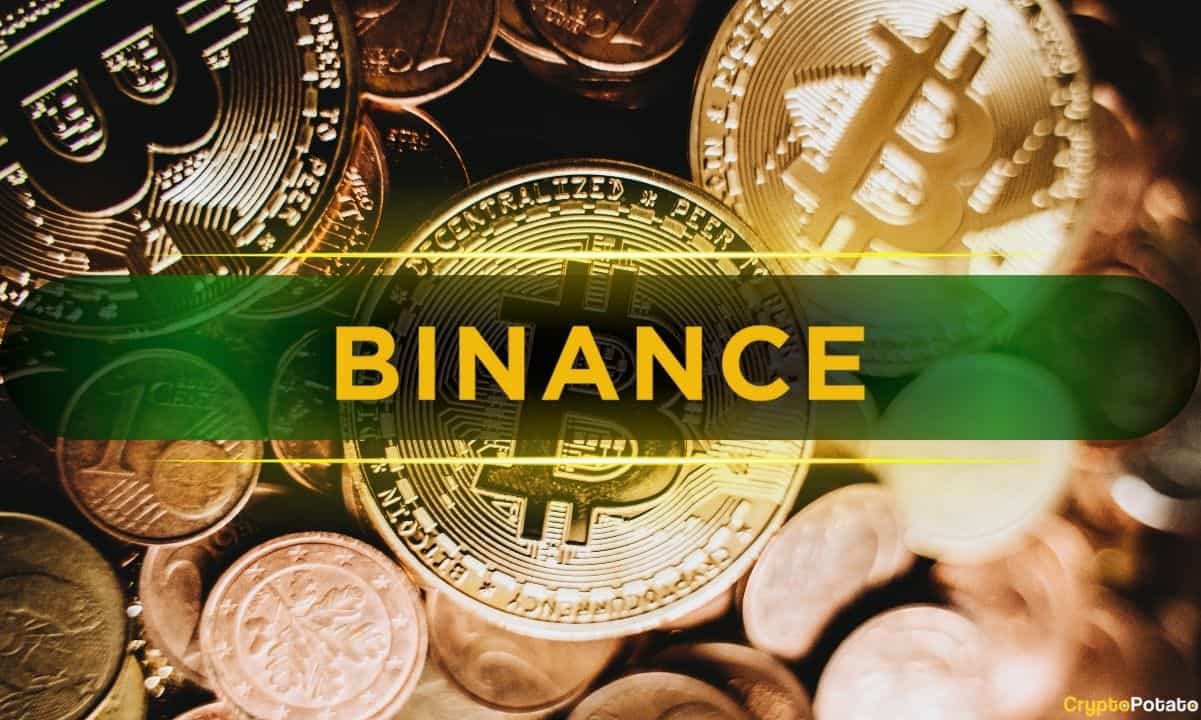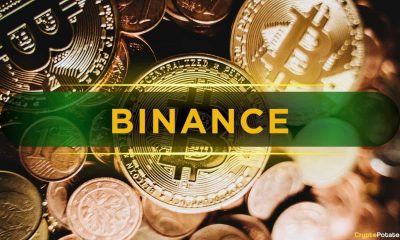Cryptocurrency
Bitcoin miners seek alternative energy sources to cut costs

During the 2021 bull market, many large mining companies took on massive loans to buy equipment and the proper infrastructure required to mine cryptocurrency. Yet the collapse of crypto exchange FTX and Celsius left many of these companies filing for bankruptcy.
The current bear market, coupled with high Bitcoin network hash rates and low profits, has yet again left the crypto industry wondering if miners will be able to recover from losses. While this remains questionable, it’s become evident that mining companies today are focusing more on alternative energy resources to cut costs, ensure profits and, in some cases, reduce their environmental impact.
Alternative energy sources used by miners
Steven Lubka, managing director for Bitcoin-focused financial services company Swan Bitcoin, told Cointelegraph that while the average rate to mine a single Bitcoin (BTC) is around $26,000, mining companies focused on renewable energy sources are seeing rates between $5,000 and $15,000 per BTC.
A spokesperson for Riot Blockchain, a United States-based publicly traded Bitcoin mining company, told Cointelegraph that wind and solar energy generated across Texas has helped Riot ensure some of the lowest costs to mine crypto. “As stated in our Q2 investor deck, it costs Riot $8,389 to mine 1 Bitcoin,” he said.

Kent Halliburton, president and chief operating officer of Sazmining — a hosted Bitcoin mining provider — told Cointelegraph that the biggest expense for mining has always been electricity:
“Bitcoin miners are naturally incentivized to find the lowest-cost power. Excess electricity is the lowest priced. With renewables, there is often excess electricity, which makes it a perfect fit for Bitcoin mining.”
Halliburton added that independently sourced data from the Bitcoin Mining Council shows that the Bitcoin network may indeed be one of the most sustainable industries. According to the source, 59% of mining operations are carbon-free and growing at a rate of nearly 4.5% per year.
“All of our mining operations in Wisconsin and Paraguay are utilizing excess hydroelectricity,” he said.
The shift to alternative energy sources seems to be a trend for miners thinking about long-term success. Phil Harvey, CEO of crypto mining infrastructure provider Sabre56, told Cointelegraph that the company is currently working with dozens of mining companies to get machines set up across Sabre56’s three facilities located in Wyoming and Ohio.

Harvey explained that Sabre56’s facility in Gillette, Wyoming — known as “Bonepile” — hosts nearly 2,200 mining machines that are powered by a combination of energy sources, including a material contribution from renewable energy. The 5,200-square-foot site draws on Basin Electric’s mixed energy portfolio. According to Basin Electric’s website, this includes 24% wind, 0.6% recovered energy and 4.3% hydro, which adds up to 28.9% renewables.
Harvey said, “The machines at our Bonepile site consist of a mixture of MicroBT Whatsminer M50s and Bitmain Antminer S19s. In terms of the site design and methodology, we leverage a forced-air design, meaning air is forced into the facility to cool the machines.”
According to Harvey, the Bonepile facility is designed to ensure surplus air provision. Harvey explained that this method reduces overheating and strain on the mining equipment while also allowing the miners to naturally exhaust hot air through overpressure.
“This is different from the standard design widespread in the mining industry, which is often extracting the hot air with an additional mechanism while not having a system in place to aid air into the facility,” he remarked.
OceanBit, a company developing renewable energy platforms using ocean thermal sources, is taking a different approach. Michael Bennett, co-founder of OceanBit, told Cointelegraph that the company is integrating Bitcoin mining into its ocean thermal energy power plant design. “This will allow us to balance variable loads, deliver power faster to offshore operations, and monetize excess energy to improve plant profitability,” he explained.
According to Bennett, ocean thermal energy is the largest untapped energy source on the planet. “It’s a base load source of renewable energy, like hydro or geothermal, but uses the temperature difference in ocean water to generate electricity.”
Bennett believes Bitcoin is the missing piece needed to scale the energy source to global adoption since it solves a number of ocean thermal energy conversion (OTEC) commercial challenges.

Nathaniel Harmon, co-founder and CEO of OceanBit, elaborated, “The byproduct of OTEC generation process is four degrees Celsius cold water, which makes it ideal for cooling ASICs, while the byproduct of ASICs is low grade heat, which makes it ideal to use in the OTEC process. The combination increases the efficiency while decreasing the cost of both.”
Bennett shared that OceanBit plans to unveil its R&D power plant in Hawaii in 2024.
Some alternative energy sources are controversial
Pennsylvanian crypto mining company Stronghold Digital Mining is using coal refuse to power its mining operations.
This refuse — also known as gob, culm or boney — is the result of the refining process of coal mining. These unrefined bits of coal mixed with shale, slate or other impurities are piled on thousands of acres of abandoned mine lands in Pennsylvania.
Greg Beard, CEO of Stronghold Digital Mining, told Cointelegraph that his firm is working with the Pennsylvania Department of Environmental Protection and local environmental authorities to clean up piles of waste coal and use them to power Bitcoin mining operations.
He said, “Acid mine drainage from these piles is one of the largest sources of water pollution in Pennsylvania. The waste piles have also been catching fire for decades by way of spontaneous combustion, releasing toxic pollution into the air. Stronghold converts the coal refuse into power by way of specialized facilities and then either supplies the power to the local grid or uses the power to mine Bitcoin.”
“Bitcoin mining is required to continue the waste coal cleanup activities, making it a much more efficient operation than miners seeking out power sources,” added Beard.
While this does provide a method of cleaning up the tons of coal refuse, from an environmental perspective, it also poses something of a Catch 22.
The special plants that can use refuse coal are still burning hydrocarbons. The Pennsylvania arm of the Energy Justice Network project has even contended that refuse coal-firing plants pollute more than new coal plants.
Stronghold itself further came under the scrutiny of environmental groups when it applied for a permit to burn tire-derived fuel at its Panther Creek plant.
Clean Air Council activist Russell Zerbo recently said on a podcast that the plant “uses the electricity it produces to generate cryptocurrency; rather than selling that electricity to the energy grid, the plant should be completely repermitted as a solid waste incinerator that would be subject to increased air pollution monitoring requirements.”
Challenges for miners may hamper adoption
While it’s notable that crypto mining companies are using alternative energy sources, certain challenges could hamper adoption. Halliburton claimed that misinformation regarding alternative energy sources is common:
“Local populaces may throw-up roadblocks because they don’t realize that Bitcoin miners are providing a net benefit to their local communities through job creation and monetizing wasted or excess electricity. Electricity is also misunderstood; it’s extremely expensive to store, and if electricity is not utilized or stored when it’s generated, it gets wasted — quite literally put into the earth.”
Moreover, the challenges that come along with using renewable energy are also evident. Harvey mentioned that the altitude of Gillette, Wyoming results in much thinner air quality. As such, the machines at Sabre56’s Bonepile facility can struggle with pulling in enough air required for cooling.
Then comes the challenge of thermal pollution, as hot air is released into the atmosphere from the mining machines, which Cointelegraph witnessed firsthand at the Bonepile site in Wyoming. Given this, some mining companies are finding unique ways to reuse heat production. For instance, Genesis Digital Assets uses hot air produced by mining equipment to grow vegetables in the Nordic regions.

All things considered, the future of mining operations will likely rely on renewable sources. Margie Feng, head of marketing at Bitmain — a leading producer of crypto mining equipment — told Cointelegraph that the company has shifted gears and is currently working hard on promoting hydro-cooling technologies, as she believes that demands for this type of equipment will only grow in the future.
Feng added that Bitmain has found that almost a quarter of all Bitcoin miners use water to power their setups, while wind and nuclear are the second- and third-biggest contributions, respectively.
Cryptocurrency
Why Is XRP Pumping? Whale Moves $90M as Ripple Price Nears $3

TL;DR
- XRP jumps 80% from April lows as whales move over $200 million in large transactions.
- ETF volume surges 5x above normal as traders await ProShares’ XRP futures fund launch.
- XRP nears $3 as traders speculate on $4 breakout amid revived momentum and whale activity.
XRP Hits Five-Month High After 80% Climb
XRP has surged nearly 80% from its April lows and shot up to almost $3 for the first time in several months. The token has increased by 8% in the last 24 hours and 25% weekly, making it one of the strongest assets in the market this week.
Interestingly, the rally also marks a Bitcoin (BTC) breakout to a new record of $118,800, assisting in pushing up wider crypto prices. XRP has gained renewed momentum after months of muted movement, drawing fresh interest from both retail and institutional traders.
Whale Transfers Fuel Speculation
On-chain data shows several large XRP movements over the past 24 hours. Whale Alert flagged a 33 million XRP transfer (worth about $90 million) from Upbit to an unknown wallet. Another 40 million XRP, valued at over $100 million, moved between unidentified addresses, as CryptoPotato reported.
In a separate transfer, 25.49 million XRP were sent from a private wallet to Coinbase. The cause behind such transactions is not clear, but these movements are likely to precede or follow price action. The timing has added to ongoing market speculation around the asset’s next move.
XRP ETF Volume Spikes Ahead of Key Deadlines
Trading activity has also picked up in XRP-linked exchange-traded products. Bloomberg’s Eric Balchunas noted a sharp increase in volume.
“The XRP ETFs seeing surge in volume today, like 4-5x the norm,” he posted.
The 2x leveraged XRP fund ($XXRP) rose 27% on the day and 55% this week, with volume hitting $120 million.
The XRP ETFs seeing surge in volume today, like 4-5x the norm, especially the 2x one $XXRP, which is up 27% today, 55% this week with $120m in volume.. Teucrium rewarded for getting out early.. ht @Todd_Sohn pic.twitter.com/Bk8hsNFhW1
— Eric Balchunas (@EricBalchunas) July 11, 2025
As reported, ProShares plans to launch three futures XRP ETFs on July 14. These include Ultra XRP, UltraShort XRP, and Short XRP funds. The launches depend on whether the SEC allows them to proceed without objection before deadlines later this month.
Traders continue to watch the charts closely. Edoardo Farina, a crypto educator, said,
“It wouldn’t be surprising if market participants woke up to see XRP trading above $4.”
XRP has remained below its all-time high for over seven years, but current momentum has revived market expectations for a breakout.
Binance Free $600 (CryptoPotato Exclusive): Use this link to register a new account and receive $600 exclusive welcome offer on Binance (full details).
LIMITED OFFER for CryptoPotato readers at Bybit: Use this link to register and open a $500 FREE position on any coin!
Cryptocurrency
Bitcoin Price Analysis: Is a Correction Coming or Will BTC Break $120K Next?

Bitcoin has decisively broken above its previous all-time high of $111K, triggering a powerful bullish rally toward the key $120K psychological resistance.
However, as BTC approaches the $120K zone, profit-taking and distribution pressure may rise, increasing the likelihood of a short-term corrective pullback.
Technical Analysis
By ShayanMarkets
The Daily Chart
After a prolonged consolidation phase, Bitcoin has decisively broken above its previous all-time high of $111K. This breakout was backed by a notable surge in buying activity, triggering a short-squeeze that accelerated the bullish momentum. As a result, Bitcoin rapidly climbed toward the psychologically significant $120K resistance level.
While this move signals strong market confidence, the $120K region is a probable zone for profit-taking and distribution, which could temporarily slow down the rally. A short-term corrective phase is therefore expected, likely pulling the price back toward the $111K region to retest the breakout level. Based on the Fibonacci retracement tool, key resistance levels ahead are located at $120K and $131K.
The 4-Hour Chart
On the lower timeframe, Bitcoin printed a powerful bullish candle, decisively breaking above both the descending wedge pattern and the previous ATH at $111K. Following a minor pullback to retest the breakout zone, the price resumed its upward surge, reaching the $120K mark.
Such impulsive rallies are often followed by short-term corrections, as traders begin to realize profits. A healthy retracement would likely target the 0.5 ($113K) to 0.618 ($111K) Fibonacci levels, a key zone where the market may stabilize and build momentum for the next leg up.
On-chain Analysis
By ShayanMarkets
As Bitcoin trades at all-time highs near $120K, an intriguing insight emerges from the Short-Term Holder SOPR metric. This indicator, which measures realized profits from investors who’ve held BTC for less than 155 days, remains notably muted, especially when compared to November 2024, when Bitcoin first reached $111K.
Despite the recent surge, short-term holders aren’t cashing out aggressively, indicating that profit-taking is still relatively limited. Historically, the end of a bullish cycle is often accompanied by elevated SOPR values due to massive profit realization. But for now, the data suggests the market isn’t overheated, and the current rally could still have room to grow if new demand enters.
Binance Free $600 (CryptoPotato Exclusive): Use this link to register a new account and receive $600 exclusive welcome offer on Binance (full details).
LIMITED OFFER for CryptoPotato readers at Bybit: Use this link to register and open a $500 FREE position on any coin!
Disclaimer: Information found on CryptoPotato is those of writers quoted. It does not represent the opinions of CryptoPotato on whether to buy, sell, or hold any investments. You are advised to conduct your own research before making any investment decisions. Use provided information at your own risk. See Disclaimer for more information.
Cryptocurrency charts by TradingView.
Cryptocurrency
Binance Crushes Rivals: Grabs 37% of Global BTC Spot Volume in H1 2025

Binance led global BTC spot volume in the first half of 2025. CryptoQuant’s latest analysis revealed that the crypto exchange commanded more than 37% market share, which is equivalent to over $3.44 trillion in traded volume.
This significant lead evidenced Binance’s position as the primary hub for Bitcoin liquidity and major flow activity, as volume spikes and large trades often appear there first.
Competitors Lag Behind
Other prominent platforms such as Bybit, Crypto.com, Coinbase, and OKX collectively accounted for around 29% of total spot volume during the same period. Together, they formed the next tier of liquidity centers despite the wide gap with Binance.
Meanwhile, crypto exchanges such as Upbit, Bitget, and HuobiPro each hovered around the 5% mark. While they did maintain relevance in the global market, but had comparatively lower influence, as noted by CryptoQuant.
On the other hand, Kraken, KuCoin, and Gate.io, among other long-tail exchanges, each contributed less than 3% of total BTC spot volume and largely served niche or regional markets.
“Bottom line: If you’re looking for deep liquidity or want to track major BTC flow activity, Binance is still the primary exchange (by far).”
Beyond its spot volume share, Binance also dominates in whale activity.
Bitcoin Whales Won’t Leave Binance
In fact, CryptoQuant found that Binance has been leading in cumulative whale transaction flows across centralized exchanges. The exchange recorded a whopping 31.36 million BTC in whale inflows and 30.82 million BTC in outflows. This reflected not the total BTC supply but the sheer velocity and frequency of whale-sized movements (≥1000 BTC/day) over its operational lifespan.
Spread across 2,869 active days of whale inflows, Binance has facilitated over 53.2 million whale transactions. It has dwarfed competitors with 10 times Kraken’s activity and five times that of HTX. This massive two-way flow indicates Binance’s role not merely as a custody hub but as a trusted venue for large-scale, active trading, market-making, and arbitrage operations, confirming its depth and infrastructure as reliable for whales.
For context, HTX Global follows with 24.1 million BTC in inflows across 6.8 million whale transactions, while Kraken recorded 23.7 million BTC in inflows with 765,000 whale transactions. Other notable platforms include Bitstamp, Bitfinex, Gemini, OKX, and Poloniex, but none match Binance’s scale.
Binance Free $600 (CryptoPotato Exclusive): Use this link to register a new account and receive $600 exclusive welcome offer on Binance (full details).
LIMITED OFFER for CryptoPotato readers at Bybit: Use this link to register and open a $500 FREE position on any coin!

 Forex3 years ago
Forex3 years agoForex Today: the dollar is gaining strength amid gloomy sentiment at the start of the Fed’s week

 Forex3 years ago
Forex3 years agoUnbiased review of Pocket Option broker

 Forex3 years ago
Forex3 years agoDollar to pound sterling exchange rate today: Pound plummeted to its lowest since 1985

 Forex3 years ago
Forex3 years agoHow is the Australian dollar doing today?

 Cryptocurrency3 years ago
Cryptocurrency3 years agoWhat happened in the crypto market – current events today

 World3 years ago
World3 years agoWhy are modern video games an art form?

 Commodities3 years ago
Commodities3 years agoCopper continues to fall in price on expectations of lower demand in China

 Economy3 years ago
Economy3 years agoCrude oil tankers double in price due to EU anti-Russian sanctions



























